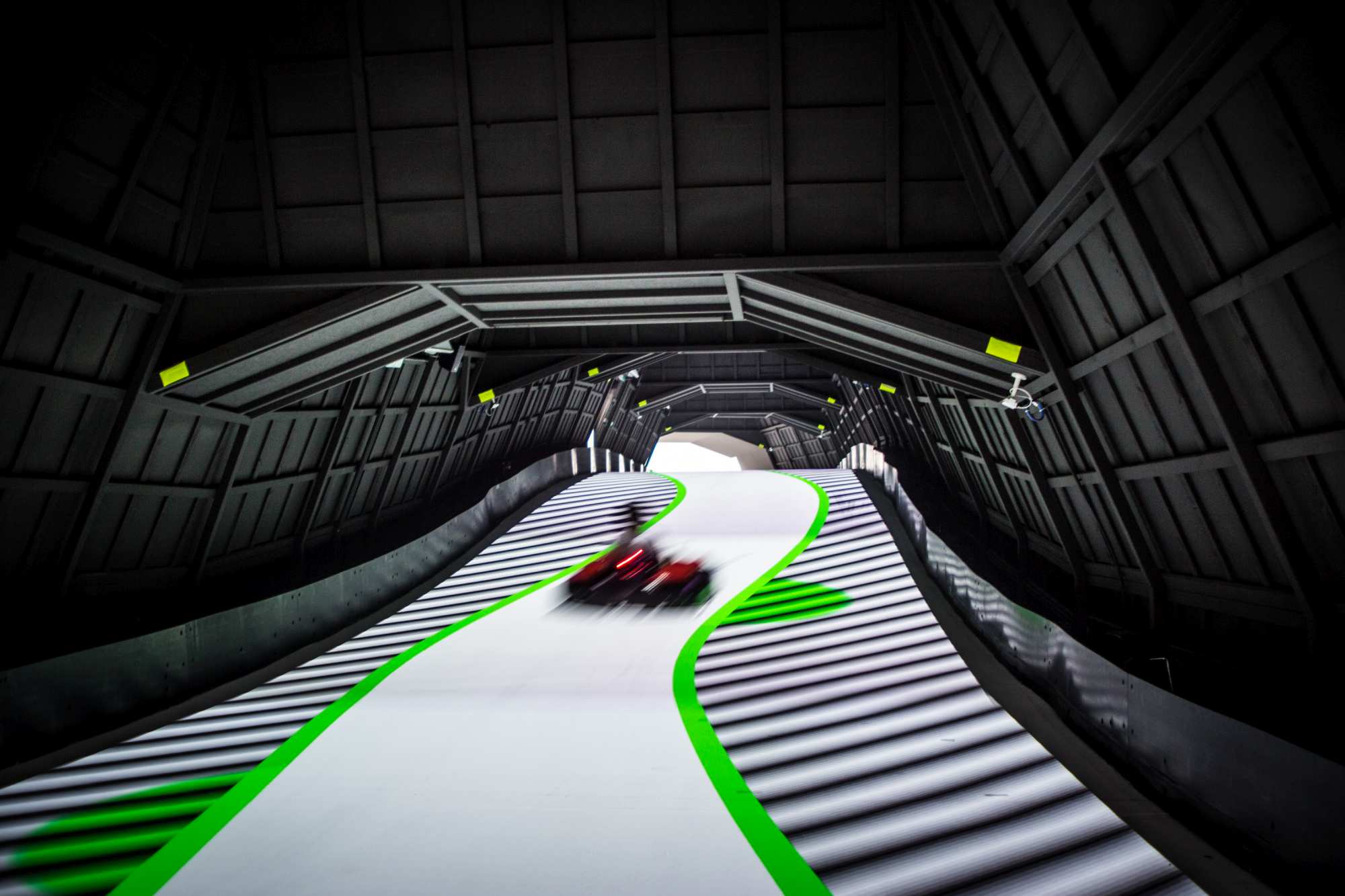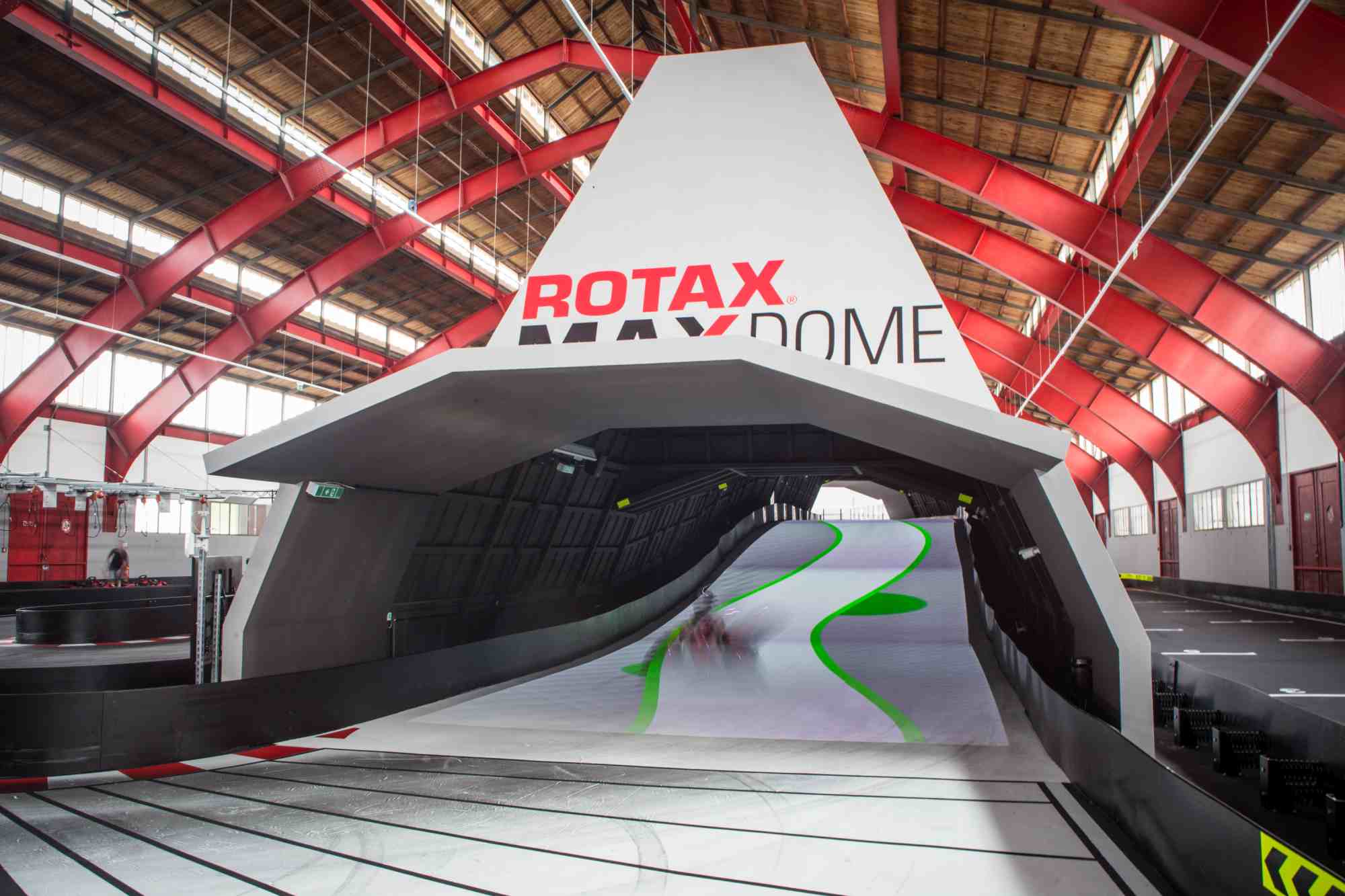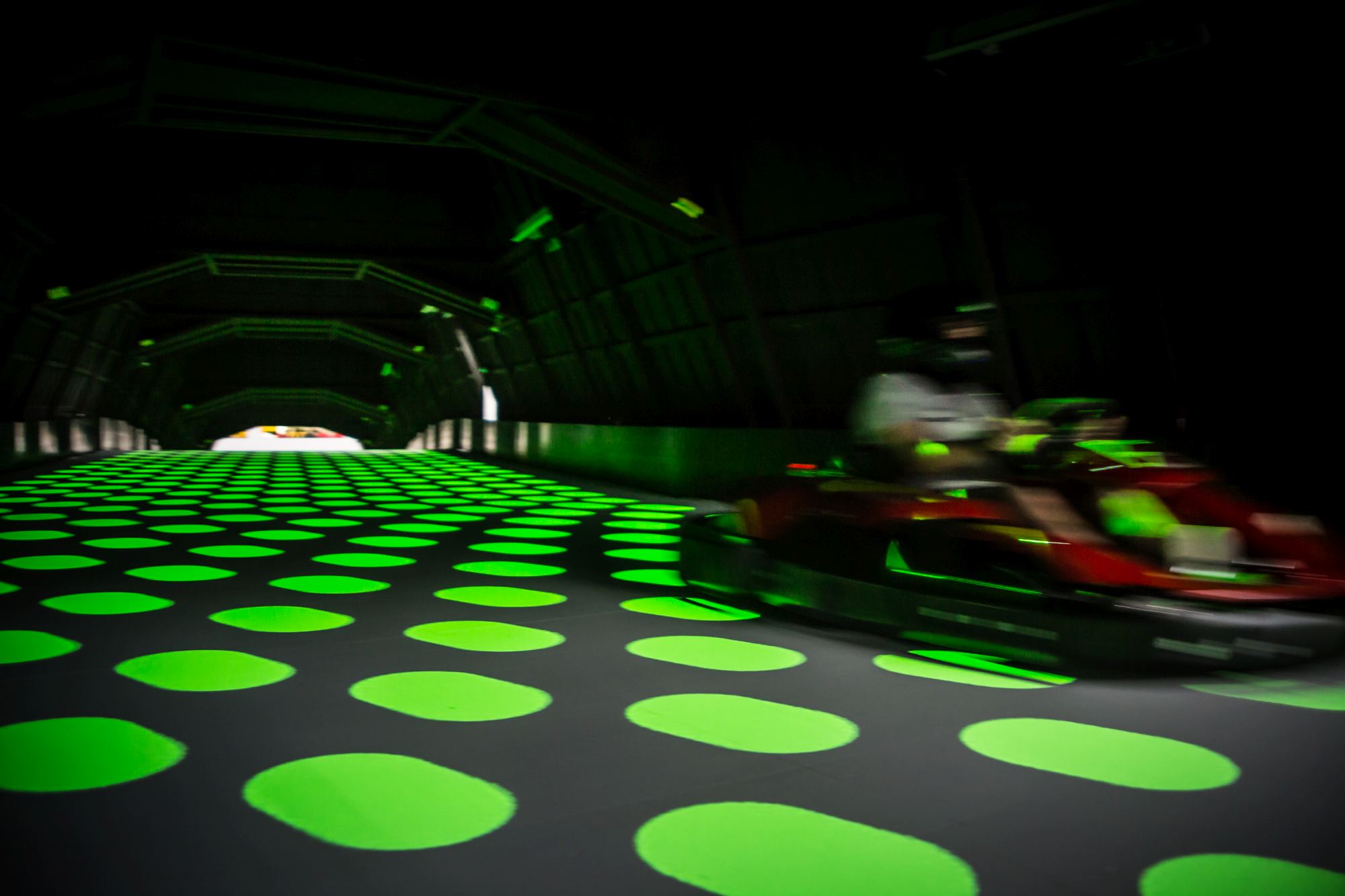In collaboration with BRP Rotax, the Ars Electronica Futurelab created an experience of the latest technologies in the field of digital gaming worlds and analog machine technology. In the Rotax MAX Dome, opened in 2019, visitors can test the engine manufacturer’s new e-karts on a sophisticated racetrack, race through virtual worlds and experience specially developed gaming elements in three-dimensional space.
Visitors will be encouraged to try out and engage with electromobility in a playful format. With the electric-powered carts in the Rotax MAX Dome, the manufacturer, formerly specialized in combustion engines, is taking the first step towards the new technology and hopes not only for investors and facility operators but also for inspired private customers.
With virtual additions to the e-cart race, the Ars Electronica Futurelab has created a full-range augmented reality to inspire as many visitors as possible beyond the classic racers. From the moment the ticket is purchased to an evaluation of the score, a multitude of applications support the race. A small video selfie can be used to create avatars that appear on scoreboards and ads. Different achievement levels motivate players to try out different functions of the space and are available on an App or a Wall of Fame. Who drives the fastest, who solves the extra tasks? Most of these extras can be collected in a large tunnel, the center of the racetrack in the middle of the hall. Over two floors, new games challenge players to try adventurous steering maneuvers in each round.
The biggest challenges for the Ars Electronica Futurelab team were the different levels of the tunnel in the Rotax MAX Dome and the speed of the e-carts. In order for the content of the games projected onto the floor to react to the carts, they must be precisely tracked and linked to the various levels of the gaming environment. It was also important to let all functions, screens and displays work together in a closed system, to develop a common aesthetic language for all applications.
The team room, developed in addition to the racetrack and together with Gamification and Game Design Studio Polycular, was particularly challenging. Like an escape room, it tells the story of an involuntary journey to a strange planet. Beamed far away, a group has to solve different tasks in order to leave the planet. Among other things, this includes a ride with the Rotax e-karts.
Two years of development time have gone into the pilot project. The Rotax MAX Dome in Linz is to serve as a prototype for other locations that want to convert their cart tracks to electric motors and make this conversion attractive by adding virtual extensions to the race track environment. The first inquiries have already arrived, as have the first enthusiastic visitors.
Read more in the Interview with Christopher Lindinger of Ars Electronica Futurelab.
Credits
Ars Electronica Futurelab: Roland Aigner, Marianne Eisl, Christopher Lindinger, Otto Naderer, Johannes Pöll, Clemens F. Scharfen, Peter Freudling
Rotax: Andreas Bangerl, Christian Nitsche, Peter Ölsinger, Johannes Schönberg
Polycular: Thomas Layer-Wagner, Robert Praxmarer




